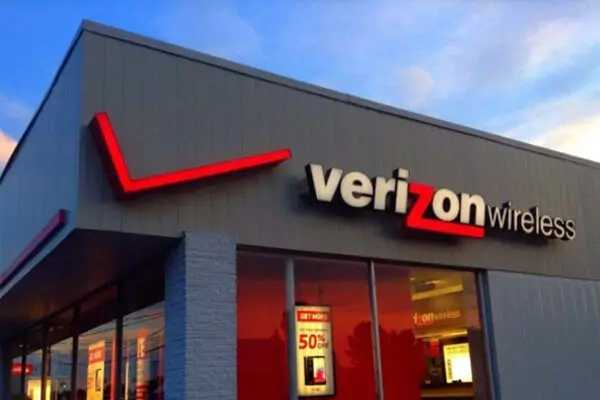Verizon Mission and Vision Statement Analysis

Verizon’s mission statement is “We deliver the promise of the digital world to our customers. We make their innovative lifestyles possible. We do it all through the most reliable network and the latest technology.” The statement draws attention to how the company strategizes to have its presence in the telecommunication niche felt by customers. It places its role in moving forward the use of technological networks at the center of what it does best. Based on this statement, the following components emerge:
- Improving lives. Verizon touches on the lives of its customers from a technological perspective. This component of its mission statement shows that Verizon gives its customers services that not only meet their needs but also go further to make their desired lifestyles a reality. For instance, life has never been easier as it is with Verizon Smart Family. It is the backup any parent would crave to have to aid the tough parenting routines. In essence, Verizon facilitates enjoyable yet affordable ways of life for its customers that would otherwise cost them a fortune with its products and services including internet and related products, and amazing phones together with wireless services to put the icing on the cake.
- Deliver the digital world. To slake this component, Verizon has gone out of its way to bring the customer all the products they could think of when it comes to the digital world. In other words, this company is where one can find technology ‘under one roof.’ To spice things up, Verizon brings the latest technological products and networks that add value to the life of its customers including making communication swifter and more reliable.
- Use of reliable and latest technology. This component directly relates to the previous one as it sheds more light on how Verizon gets things done to meet the desires of its customers. Some of the ways through which it does this include the use of networks that are not only reliable but also those that agree with the changing tech times and devices that reflect similar qualities. The mission statement alludes to the presence of the cellular networks offered by the company among others.
Introduction
Verizon Communications has defined what value is in the telecommunications industry with the customer-specific and value-added services it offers in the sector guided by its mission and vision statements. In close to 20 years the come has distinguished itself in this highly competitive industry by retaining its technological focus and going further to refine how it targets its customers ever since it was founded in 2000.
The company has never looked back on how it approaches its business. It has maintained a trend that has seen it grow into fruition to become one of the leading companies in the sector with its mission and vision statement being the main ‘game changers.’ A corporate vision statement is a description of the desired future position that a company works to be in.
Verizon’s vision statement brings out the inspirational angle of the company and how it can empower people to positively change their lives. In comparison, a corporate mission statement declares the actions or specific steps that the business would exploit to stimulate its projected growth.
Verizon identifies how the company is set to impact the lives of its customers. It also hints at the experience they would have by using the products and services offered by the company. The flawlessness characterizing operations of Verizon is made possible by the presence of the core values of the company in addition to the mission and vision statements.
Together, they position Verizon strategically such that the company is able to outwit its competitors in the telecommunications niche while at the same time stimulating the progressive advancement of its business profile.
Vision Statement
Verizon’s vision statement is “to inspire tomorrow’s creators to use technology to build brighter futures for themselves, their families and the world.” The company’s focus is on enthusing a technologically driven future in this vision statement. The emphasis is on the creators, which translates to other innovators out there in the world. Therefore, Verizon wants to create a legacy they can emulate while tech that has a positive impact on everyone in the world, including themselves. Some of the components that relate to this vision statement include:
- Source of inspiration. In this component, Verizon is all about its role as a leader in the telecommunication sector. The company illustrates how willingly and proudly it takes up the responsibility of leading the creator on the right path of creating a future that has no limitations when it comes to technological progress. Most importantly, the component leaves the specification of the term ‘creators’ open to signify that anyone passionate in this sector can also take up this role.
- Make the world better. The second component is all about the value that the customers and other entities gain by interacting with Verizon at various capacities. The company does this by either boosting business for its stakeholders or treating its customers to the best, reliable, and efficient communication networks that make their lives better. This also includes their ability to access information through the use of the latest networks provided by Verizon.
Core Values
Verizon core values comprise “a great customer experience, growth & profitability, speak human, keep our word, deliver digital first, and better matters for our customers. “ The success of a company is often pegged on the culture and practices within the organization. Verizon management acknowledges this element as shown by the values they enforce to be part and parcel of all activities and decisions of the company.
Verizon highly values holding nothing back while serving its customers. It understands that this is the foundation for the growth and success of the company, which should also incorporate key elements such as sensitivity to the needs of others. In fact, the emphasis on acting honestly at all times advances this value. While stimulating this attitude, Verizon lays emphasis on its employees to maintain a digital mindset, which in turn, advances the capacity of the company to serve its client with products that meets their needs.
References
- Ancarani, F., & Shankar, V. (2003). Symbian: Customer interaction through collaboration and competition in a convergent industry. Journal of interactive marketing, 17(1), 56-76.
- Brătianu, C., & Bălănescu, G. V. (2008). Vision, mission and corporate values. A comparative analysis of the top 50 US companies. Management & Marketing, 3(3), 19-38.
- Cady, S. H., Wheeler, J. V., DeWolf, J., & Brodke, M. (2011). Mission, vision, and values: what do they say? Organization Development Journal, 29(1).
- Choudhary, A. (2012). Mission” Trust.”. Academy of Strategic Management Journal, 11(1).
- Chun, R., & Davies, G. (2001). E-reputation: The role of mission and vision statements in positioning strategy. Journal of Brand Management, 8(4), 315-333.
- Collins, J. C., & Porras, J. I. (1991). Organizational vision and visionary organizations. California management review, 34(1), 30-52.
- Gavil, A. I. (2004). Exclusionary distribution strategies by dominant firms: Striking a better balance. Antitrust LJ, 72, 3.
- Granger, S. (2002). Social engineering fundamentals, part II: Combat strategies. Security Focus, 9.
- Grusenmeyer, D. (2009). Mission, vision, values & goals.
- Hahn, R. W., Litan, R. E., & Singer, H. J. (2007). The Economics of “Wireless Net Neutrality”. Journal of competition law and economics, 3(3), 399-451.
- King, D. L., Case, C. J., & Premo, K. M. (2010). Current mission statement emphasis: be ethical and go global. Academy of Strategic Management Journal, 9(2), 71.
- Lehr, W., & McKnight, L. W. (2003). Wireless internet access: 3G vs. Wi-Fi? Telecommunications Policy, 27(5-6), 351-370.
- Mirvis, P., Googins, B., & Kinnicutt, S. (2010). Vision, mission, values. Organizational Dynamics, 39(4), 316.
- Moran, B., Feinleib, D., & Mount, C. (2003). U.S. Patent Application No. 10/000,223.
- Papulova, Z. (2014). The significance of vision and mission development for enterprises in Slovak Republic. Journal of Economics, Business, and management, 2(1), 12-16.
- S Eric Anderson Ph.D., M. B. A., & Brad Jamison Ph.D., M. B. A. (2015). Do the top US corporations often use the same words in their vision, mission and value statements?. Journal of Marketing and Management, 6(1), 1.
- Tarnow, E. (1997). A recipe for mission and vision statements. Journal of Marketing Practice: Applied Marketing Science, 3(3), 184-189.
- Verizon – Home.



i would like to get my statement on line